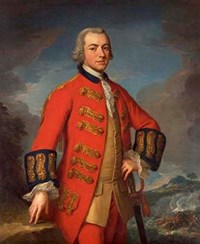- Lewis & Clark National Historic Trail (113)
- Homestead National Historical Park (78)
- Boston National Historical Park (69)
- Aleutian Islands World War II National Historic Area (59)
- Charles Young Buffalo Soldiers National Monument (59)
- Saratoga National Historical Park (43)
- National Mall and Memorial Parks (37)
- Fort Sumter and Fort Moultrie National Historical Park (32)
- James A Garfield National Historic Site (32)
- Show More ...
- Wildland Fire Program (14)
- Fire and Aviation Management (7)
- National Center for Preservation Technology and Training (7)
- Inventory and Monitoring Division (6)
- National Heritage Areas Program (6)
- National Historic Landmarks Program (6)
- Archeology Program (5)
- Aviation Program (5)
- Harpers Ferry Center (5)
- Show More ...
Showing 1,669 results for helicopter ...
- Type: Person
Marguerite Thompson Zorach
- Type: Article

Successful management of wildland fire is a team effort. National Park Service (NPS) staff in Alaska have formed a unique partnership with the Bureau of Land Management Alaska Fire Service (AFS), which has helped to turn challenges into opportunities, and increased operational efficiency in utilization of helicopters for fire suppression. This partnership has benefited not only Alaska, but also the wildland firefighting effort in several western states.
Bright Angel Trail
- Type: Place

Bright Angel Trail lets hikers walk in the footsteps of the canyon's Indigenous Peoples, miners, and early tourists, as they descend into the canyon's depths. Offering big views, morning and afternoon shade, resthouses, vault toilets, and water stations during the summer. The water is OFF at 1.5- and 3-mile resthouses. Portions of Bright Angel Trail are closed for waterline construction, Visit the link for a list of trail closures.
William Moultrie
- Type: Person

William Moultrie's 2nd South Carolina Regiment successfully defended Charleston Harbor from the Royal Navy in the Battle of Sullivan's Island on June 28, 1776. This Patriot victory marked the beginning of a meteoric rise for Moultrie as he achieved the rank of general and later served South Carolina as governor.
- Type: Person
- Type: Person

Best known today for his military campaigns against the Indians before and after the Civil War, George Crook rose from the command of the 36th Ohio Infantry to the command of a cavalry division which fought in Tennessee and southwestern Virginia. During the war he became friends with future president Rutherford B. Hayes.
St. Vrain's Quarters
Information Panel: Aftermath
How the Role of Secretary of State Pushed John Quincy Adams to the Presidency
- Type: Article
John Quincy Adams had an impressive resume even before he became President of the United States. He started as a lawyer and a political commentator and was a diplomat to important European countries such as Russia and Great Britain. He even served as a U.S. Senator from 1803 to 1808. Yet, an important role that Adams held, which pushed him toward the presidency, was serving as Secretary of State in President James Monroe's cabinet.
Latinx Experiences at Hanford: Frank Armijo
- Type: Article

Listen to clips from an oral history interview with Frank Armijo as he shares memories growing up in Pasco, his joy and passion in the work that he accomplished at Hanford, and advice for youth. Frank Armijo’s parents were initially migrant farm workers from Texas who had met in Walla Walla. On one of the family’s work trips to the state, Frank’s dad, Rosalio, picked up additional work with a construction company that brought the family to Tri-Cities around the early-1960s.
Pap Dandridge aka Uncle Stephen
- Type: Person

John Pegram was a career United States army officer and West Point graduate who resigned his commission in 1861 to accept a position in the Confederate army. In the summer of 1861, at Rich Mountain, Virginia, he became the first former US Army officer to be captured by Federal forces when he surrendered his entire regiment. Pegram returned to the Confederate army and served until his death in February 1865.
- Type: Person

Benjamin Lincoln, a major general of the Continental Army, was present at pivotal moments in the American Revolution. He oversaw the Continental Army's largest defeat when he surrendered 5,000 soldiers to the British in Charleston, South Carolina in May 1780. After being exchanged, he returned to the army and was present at the allied Franco-American victory at the Siege of Yorktown. He accepted the surrender of General Charles O'Hara's sword.
- Type: Person

Charles Lee, former British Army officer, became the second highest ranking general of the Continental Army during the American Revolution. On June 28, 1776 he oversaw the victory at the Battle of Sullivan's Island in Charleston, SC. Two years later, his retreat on the field at the Battle of Monmouth Courthouse would result in his court martial and the end of his military career. Learn more about this controversial figure here.
- Type: Person

General Sir Henry Clinton, the longest serving British general of the American Revolution, served as commander in chief from 1778 to 1782. In the years after the Revolution, Clinton defended his actions in writing and felt unfairly labeled as the scapegoat for British defeat. He died in London in 1795 before he was able to assume the post of governor of Gibraltar.










